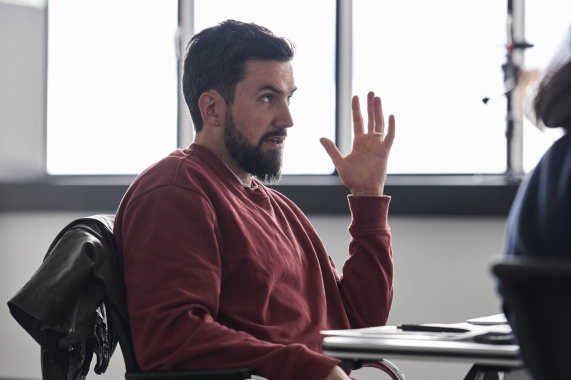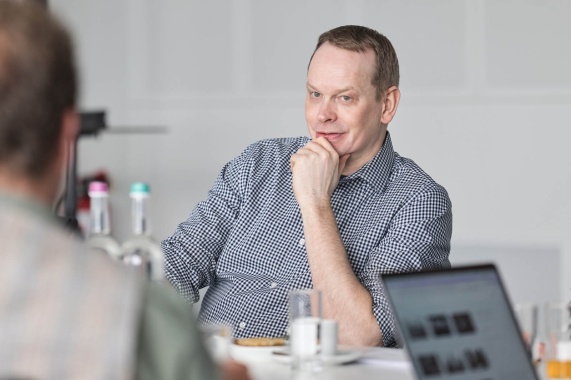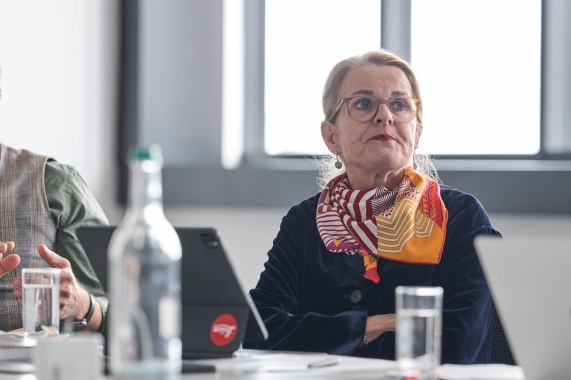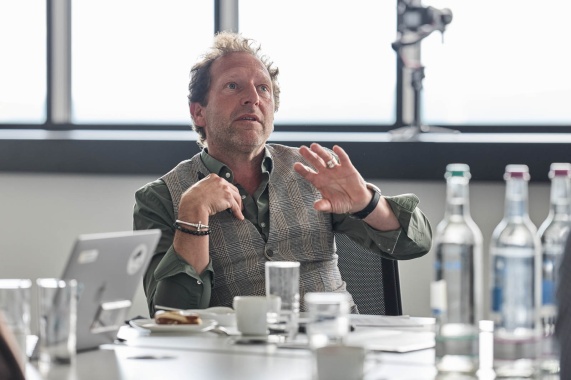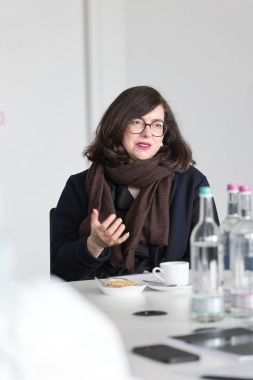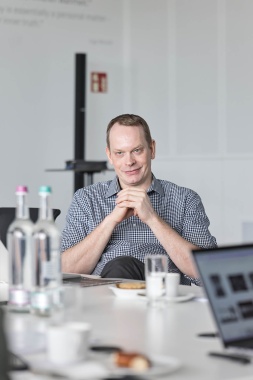Behind the Scenes: die LOBA-Jury 2024
Once again, it was a long and exciting process getting together the nominations for the LOBA shortlist, and choosing the winning series. The jury met in Wetzlar on May 28, to discuss all the work that had been submitted. Some first impressions below offer insight into the jury’s work and their rounds of discussion; the statements from the five jury members are proof of the importance and high status of the LOBA on the international photography scene.
The LOBA jury in 2024 was made up of: Dimitri Beck, Head of the Photography Department at Polka; Per Gylfe, Head of the Education Department at the International Centre of Photography (ICP); Ciril Jazbek, photographer and 2013 LOBA Newcomer Award-winner; Amélie Schneider, Head of the Picture Editorial Department at Die Zeit; and Karin Rehn-Kaufmann, Art Director and General Representative of Leica Galleries International.
And things will remain exciting up until the evening of October 10, when the winners of the LOBA 2024 in the main and newcomer categories will be announced. The festive ceremony will take place within the framework of the Celebration of Photography, when both winners will be presented with their awards. Until then, the complete shortlist of twelve fascinating series will be introduced successively on the LOBA website.
Dimitri Beck:
“If choosing the shortlist was pretty easy and obvious in some cases, the final decisions for choosing the winners happened after long and extensive talks, which were important and fruitful, giving even more pertinence for the work chosen. I appreciated the diversity of stories, including a few subtle visual approaches, and also stories coming from Latin/South America, which are usually not represented and presented enough, unfortunately. LOBA is surely a milestone in the international photography scene and plays a key role in promoting good visual storytelling. Presenting a shortlist of twelve photographers/works is important to explore the diversity of visions and stories happening nowadays.”
Per Gylfe:
“Each jury member brought a unique perspective to the discussion while being very open to the views and opinions of their peers. The collaborative nature of these discussions led to rigorous and dynamic conversations, ultimately leading to well-rounded and informed decisions. The caliber of entries, especially in the Newcomer category, was high. Although the final decisions were challenging, the jury reached a consensus, and we were all satisfied with the results. There was a good degree of diversity among the applicants both in terms of themes and geographical representation. It was fascinating to see the large number of entries embracing a traditional analogue approach to photography, while simultaneously exploring new and authentic visual languages. The LOBA jury engaged in a very interesting discussion centered around traditional versus contemporary and potential future approaches to documentary storytelling. How photographers will approach asserting the authenticity of their work, and emphasise their own subjective authorship in response to the increasing prevalence of artificially generated visual content.”
Karin Rehn-Kaufmann:
“The collaboration with the nominators, and the jury’s discussions surrounding the various series were, once again, highly enjoyable and enriching. The results are impressive; and it seems more important than ever to offer committed photographers a forum where their series can respond to current, challenging issues. Therefore, it's not surprising that climate and the environment, social and ethnic conflicts, violence and marginalisation are at the centre of many of the series. All of the series show a humanistic view of the difficult situations in the world. I’m particularly pleased that even more women photographers entered the competition this year.”
Amélie Schneider:
“In times of war, crises and social insecurity, photography remains the medium with which to to reach and touch people’s emotion and to make world events tangible. The jury was impressed by the high level of the submissions. It’s a powerful and exciting time for photography! We dive into worlds which are under-represented in media reporting. You can feel an impressive depth and dedicated precision in these series; always very close to people and their environment.”
Ciril Jazbec:
“There were definitely moments during the discussions where we surprised each other with unexpected opinions or perspectives, which made the process even more dynamic. For me, the magic in a photo series comes from a clear personal and artistic vision, much like the narrative structure of a film or novel. It’s not just about documenting a story; it’s about how the work is edited and balanced to create something truly compelling. Deciding on the final winner was no easy task—it’s always heartbreaking to have to choose just one when several projects are equally deserving. I was particularly struck by the overall quality of submissions this year, with a special nod to the newcomer section, where we saw some truly innovative and deeply personal projects. Some of my favorite entries did make it onto the shortlist, and I’m thrilled about that.”

